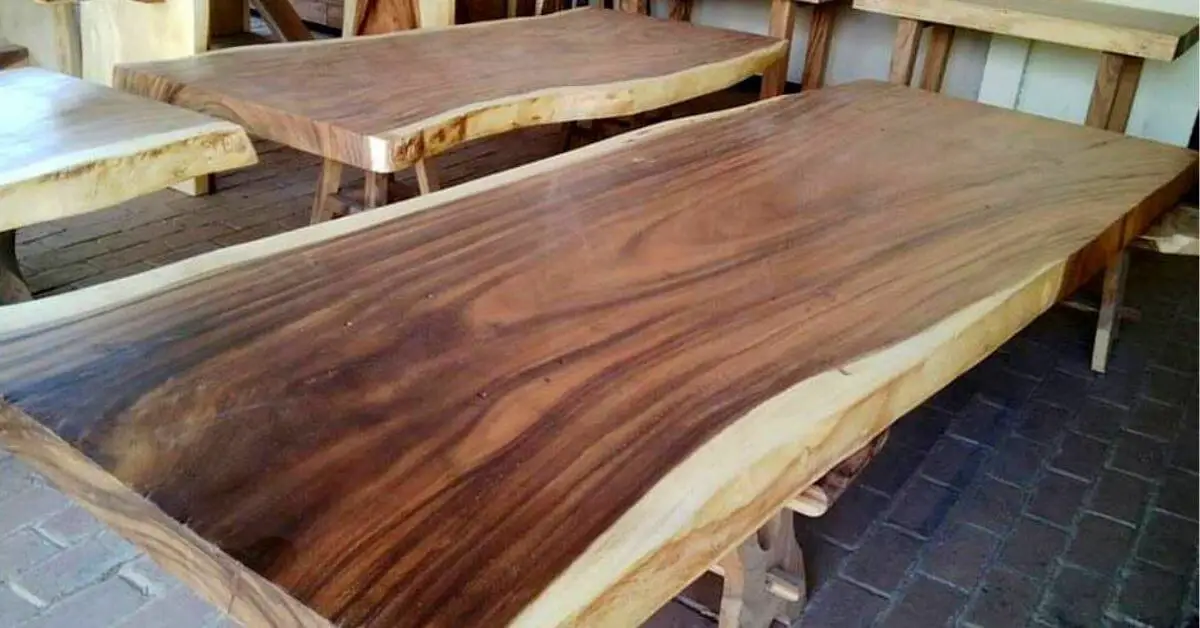Monkeypod is one of the domestic woods for woodworkers of all skill levels. Mainly found in Central and South America. It is considered an affordable domestic hardwood.
There are many species of wood used for furniture, some of which are famous, such as maple, oak, pine, beech, and many others. But many woods are not very popular but are a good choice for furniture, and Monkeypod is one of them.
What is Monkeypod Wood?
Monkeypod wood is moderately durable, stable, and rot and insect-resistant, making it versatile. Monkeypod is a hardwood, which means it comes from a deciduous tree. The Monkeypod tree is a shade tree of large diameter; hence, the tree is valuable for the environment.
Pros of Using Monkeypod Wood
Rot Resistance
Monkeypod wood is naturally rot-resistant to insects and rots, making it a durable choice for various applications. That’s why wood does not need any treatment for interior uses.
Durable
Monkeypod wood is considered moderately durable and stable. It requires low care compared to most other hardwoods. Many woodworkers believe that Monkeypod projects typically last more than 10 to 15 years without splitting, rotting, or warping.
Appearance
Monkeypod has an attractive and visually appealing grain pattern, enhancing the aesthetics of furniture and other wooden items.
Versatility
Monkeypod is versatile hardwood, and it can be used for a variety of indoor and outdoor applications.
Cons of Using Monkeypod Wood
Monkeypod is an excellent wood species, but we know that all wood or material has some cons or limitations, which we should know before use.
Availability
Monkeypod wood is found only in limited areas. Hence, Monkeypod wood is unavailable in the quantity or dimensions required for a particular project.
High Cost
Wood can be relatively expensive compared to more common hardwoods, depending on availability, quality/grade and location.
Color Variation
The color of monkeypod wood can vary significantly, which may make it challenging to match for certain projects.
FAQ
How to Protect Monkeypod Wood from Water Damage?
Monkpod wood is durable, but frequent exposure to water can affect it. Therefore, it is essential to protect against water damage and maintain durability. Here are some practical ways to prevent water damage to wood.
- Seal or Finish the Wood: Sealing is the most effective method to protect against the effects of moisture or water. Sealing/finishing seals the wood’s open pores or creates a protective layer to prevent moisture from penetrating the wood.
- Regularly Maintain Finish: Over time, the protective finish or sealing on wood may deteriorate. So keep sealing wood from time to time, especially for outdoor furniture.
- Keep wood Dry: Keep your furniture dry by protecting it from prolonged exposure to water. Wipe off moisture immediately.
- Regular Inspection: Periodically inspect the wood for signs of damage, such as peeling paint, discoloration or soft spots. Detecting wood damage early can prevent it from worsening.
Is Monkeypod Wood Waterproof?
No, Monkeypod Wood is not waterproof but it is good moisture and weather resistant. Hence, it can be used for both indoor and outdoor purposes. Despite being good moisture and weather-resistant, monkeypod wood requires sealing/finishing to maintain its durability.

